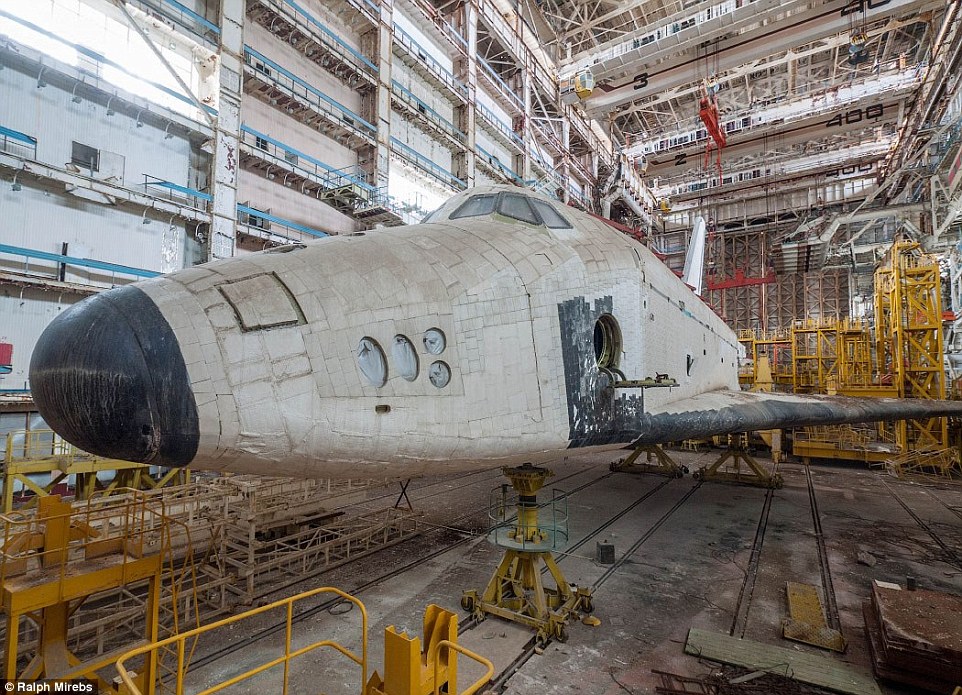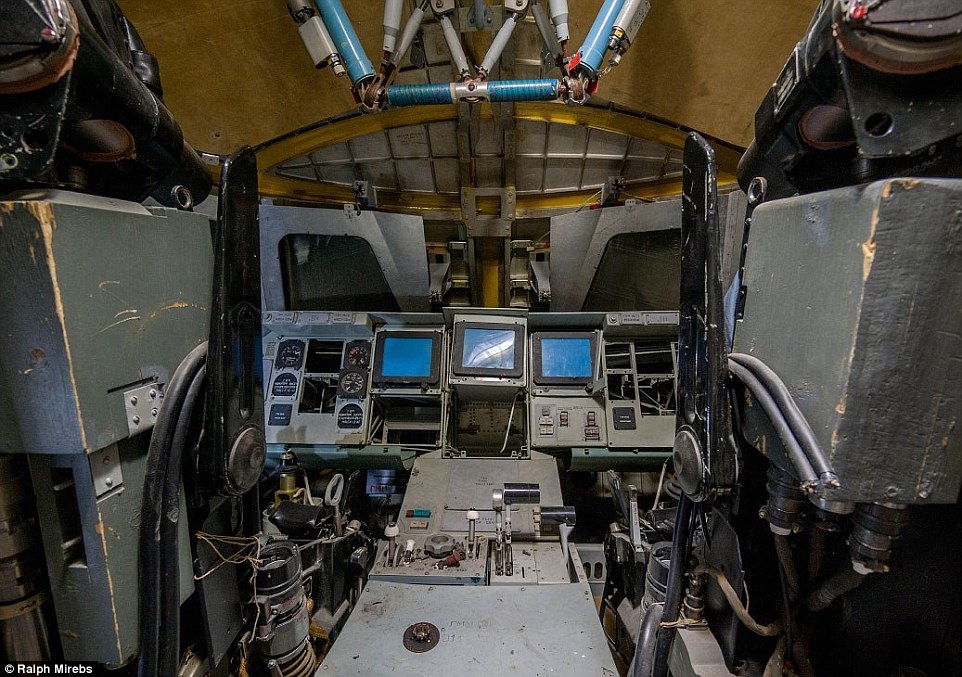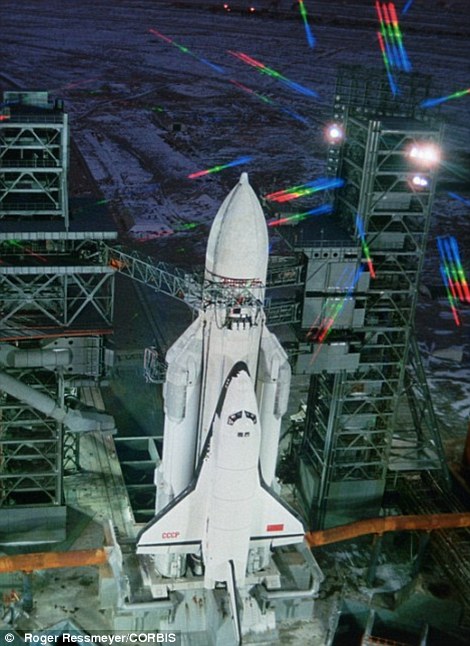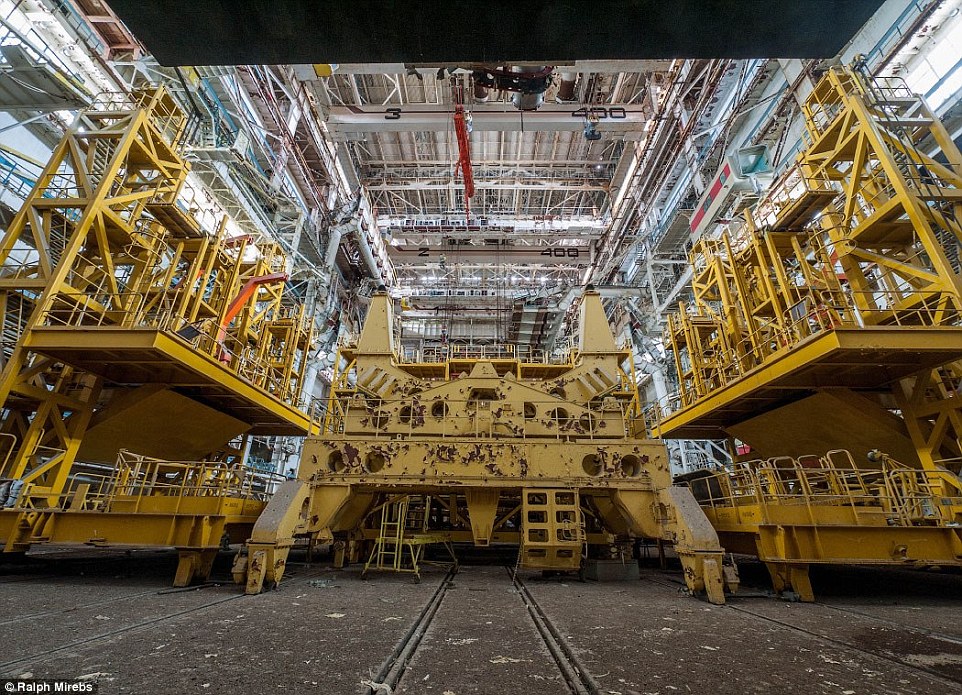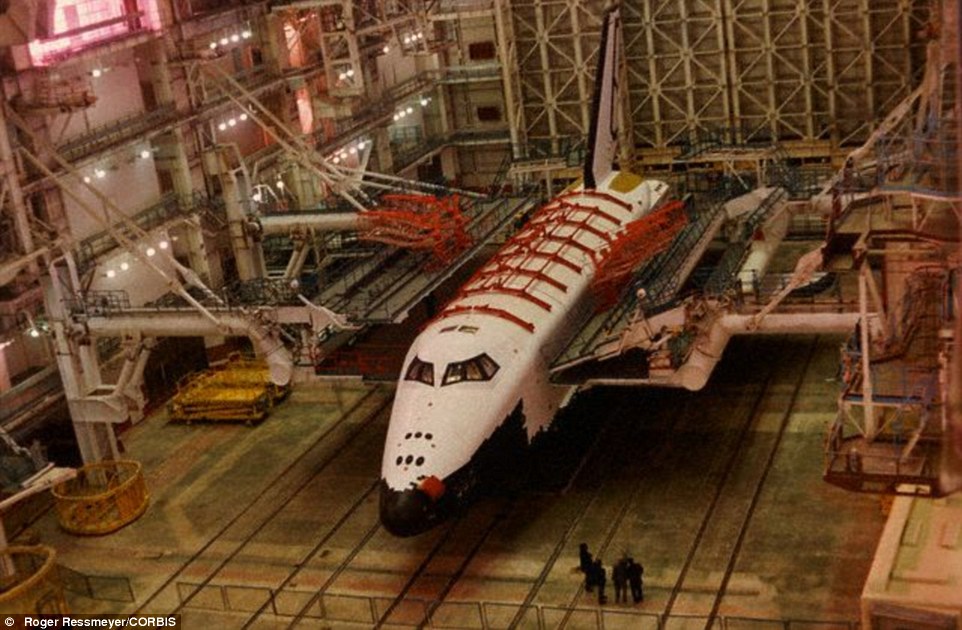13 June 2015. In the 1980s, a little-known chapter in the space race took place when the Soviet Union attempted to build their own version of Nasa’s Space Shuttle. But despite a successful unmanned orbital test flight the Buran vehicles were soon scrapped amid rising budget cuts and left to rot in hangars. One of the Soviet shuttles was destroyed when its hangar collapsed in 2002, but two other models remain intact and have been pictured in a stunning series of photographs.
The images were taken by photographer Ralph Mirebs in Baikonur, Kazakhstan, last week. They reveal a large hangar – once a hub of activity but now left derelict – located near to the Baikonur Cosmodrome, which is still used to launch Soyuz rockets today. At the base of the hangar are two unused Buran shuttles, named Burya and OK-MT.
Their similarity in appearance to Nasa’s Space Shuttles is not accidental – at the time, this was deemed to be the best way to create a vehicle that could travel to and from orbit, although some have also suggested espionage was at play.
The Buran shuttle was intended to be launched on the huge Energia booster, similar to the giant orange Space Transporation System used by the Space Shuttles.
Like the Space Shuttles, the Buran vehicles had engines located at the back, and two wings for a controlled landing back on Earth. Development of the programme began in 1976, with the reusable spacecraft (although the booster was not) capable of performing operations in orbit before returning to Earth.
But after the one unmanned spaceflight in 1988, the programme was scrapped following the dissolution of the USSR in 1993. This was despite several other models and test vehicles being built, some of which reside in museums today. But these two shuttles in particular were simply left in the MKZ building at Baikonur Cosmodrome, with their basic structure still intact.
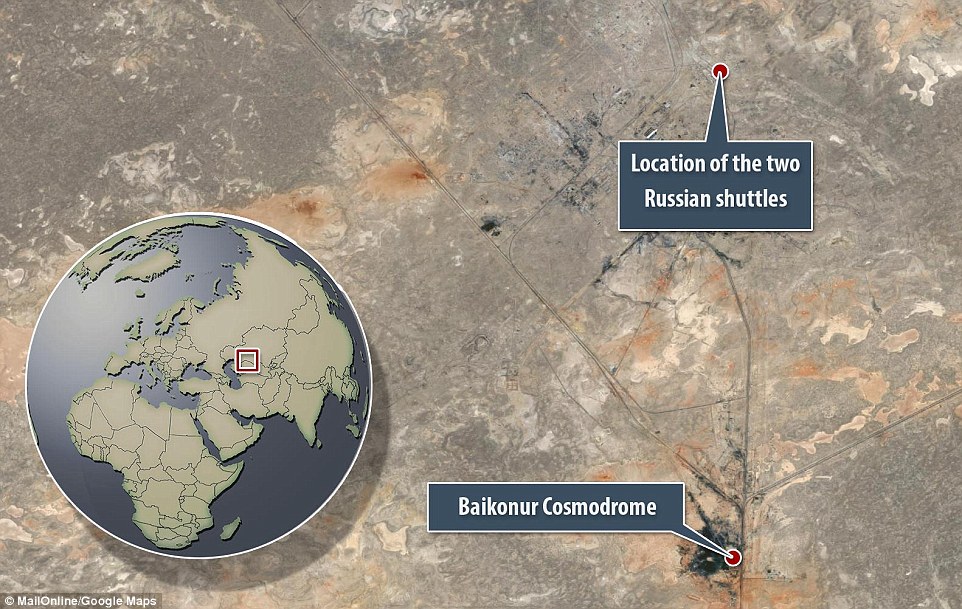
The hangar is located near to the Baikonur Cosmodrome in Kazakhstan, which is still used to launch Soyuz rockets today
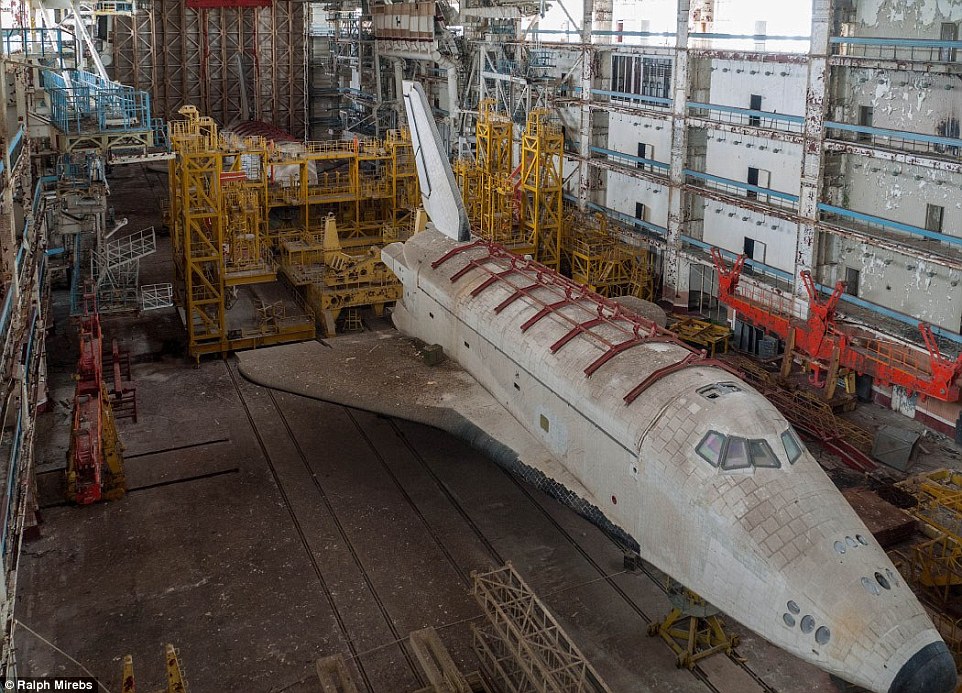
The images reveal how the shuttles and the hangar have been left to rot over the years, with dust piling up on the ground and wings
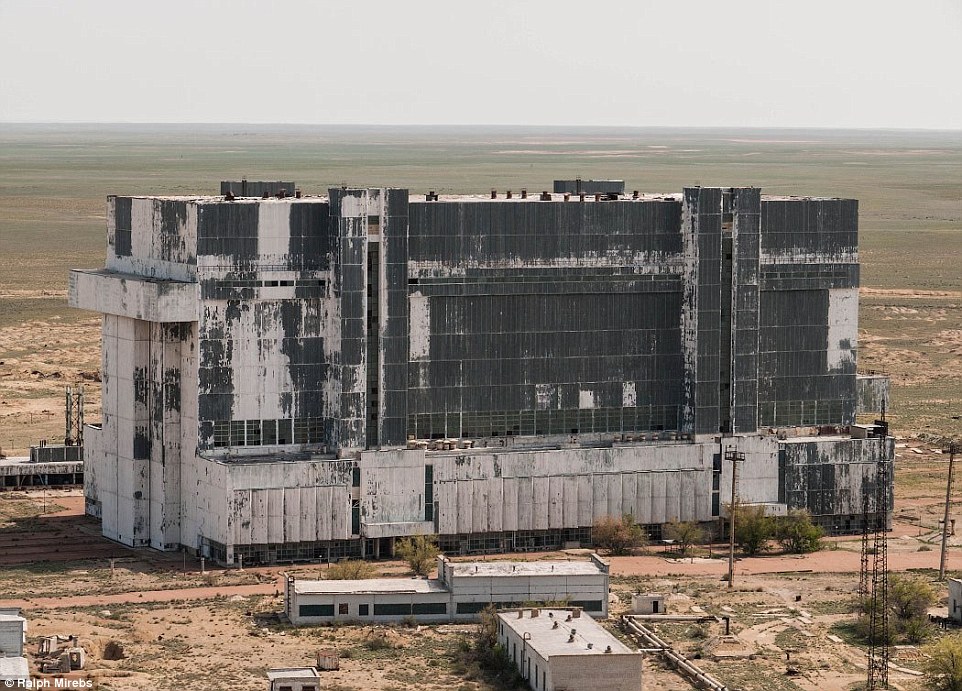
The huge hangar was originally used to build the shuttles and roll them out to the launch pad – but only one was ever flown
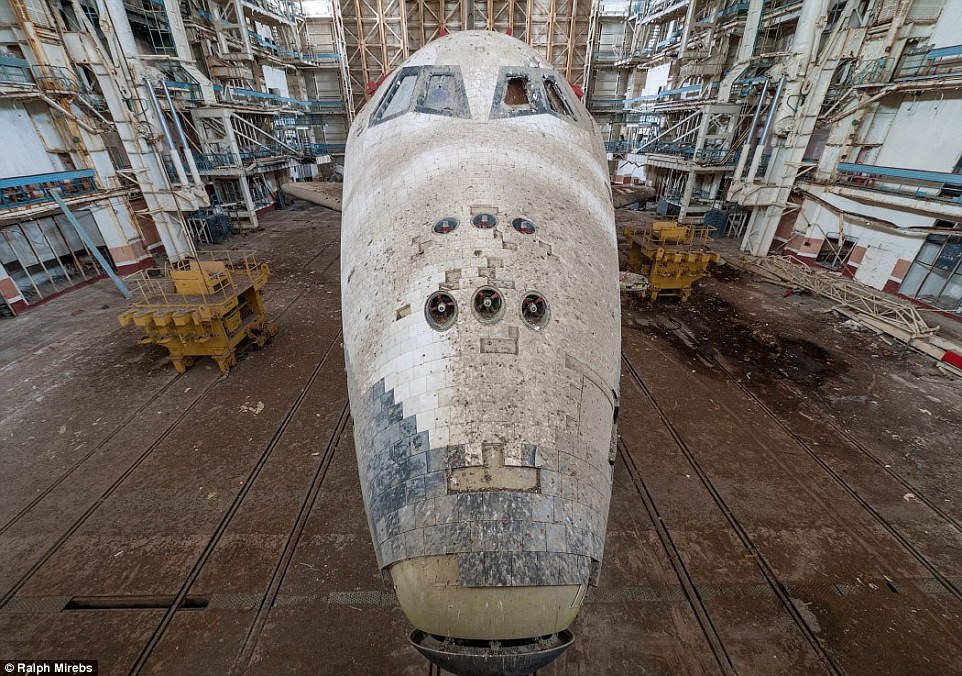
The shuttles are caked in dust and bird poo, with cracked windows also visible. Some other prototype shuttles not seen in this hangar are located in various places around the world
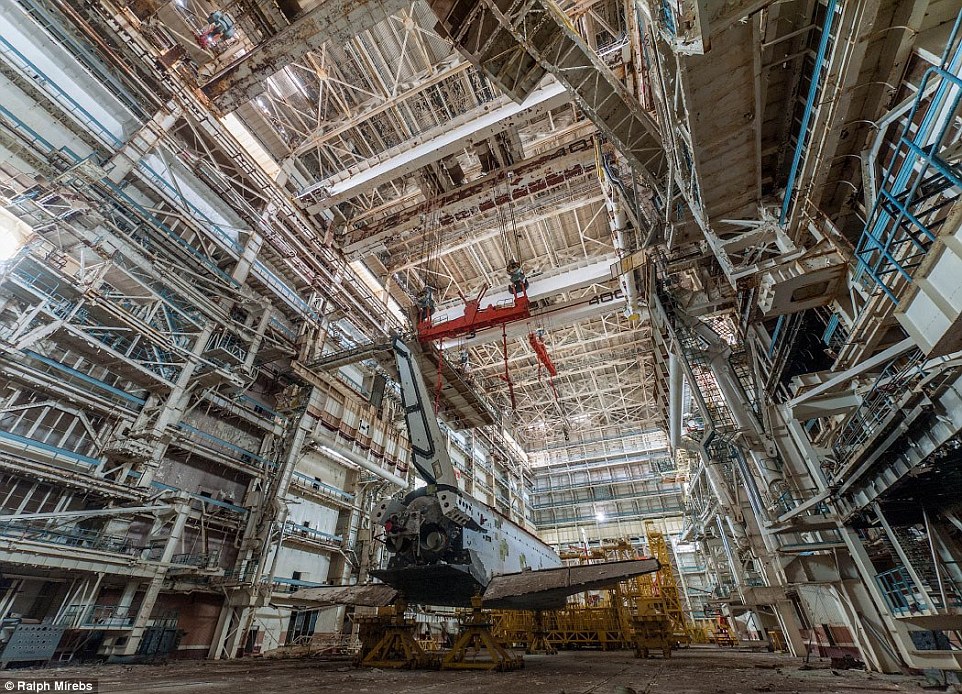
The huge hangar had three large beams at the top that were used to lift up equipment and even the shuttles themselves
‘Over the years, the Baikonur Cosmodrome territory has tested many different spacecraft, the apex of which was the system Energia-Buran,’ Mr Mirebs explained on his website (in Russian). ‘But history has chosen its path and the project died in infancy. This giant hangar was actually an assembly complex and, measuring 433ft (132 metres) long by 203ft (62 metres) in height, it is the largest building at the Baikonur Cosmodrome. Huge sliding gates 138 by 118ft (42 by 36 metres) would have allowed the shuttles to have been rolled out to the launchpad nearby. To protect the shuttles from a possible shockwave if a heavy launch vehicle exploded nearby, the structure was made of reinforced steel.
The room was also intended to be a ‘clean room’ devoid of dust when working on the orbiters, so the doors leading out of the central area could be sealed.
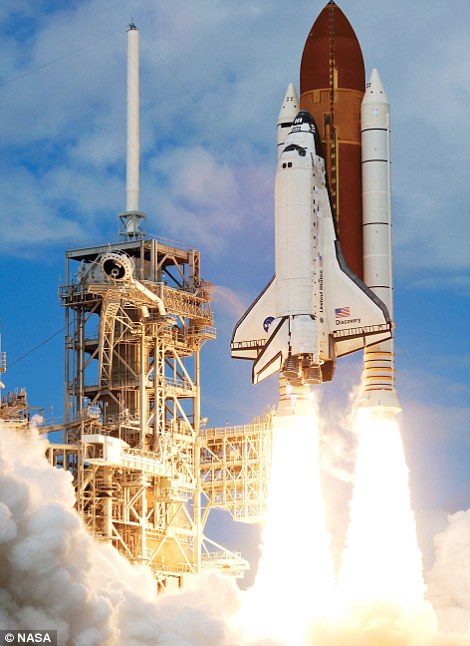
The Buran space shuttle (above) bears some obvious similarities to Nasa’s Space Shuttle (below), leading some to suggest that espionage may have been at play in the development of the Buran programme
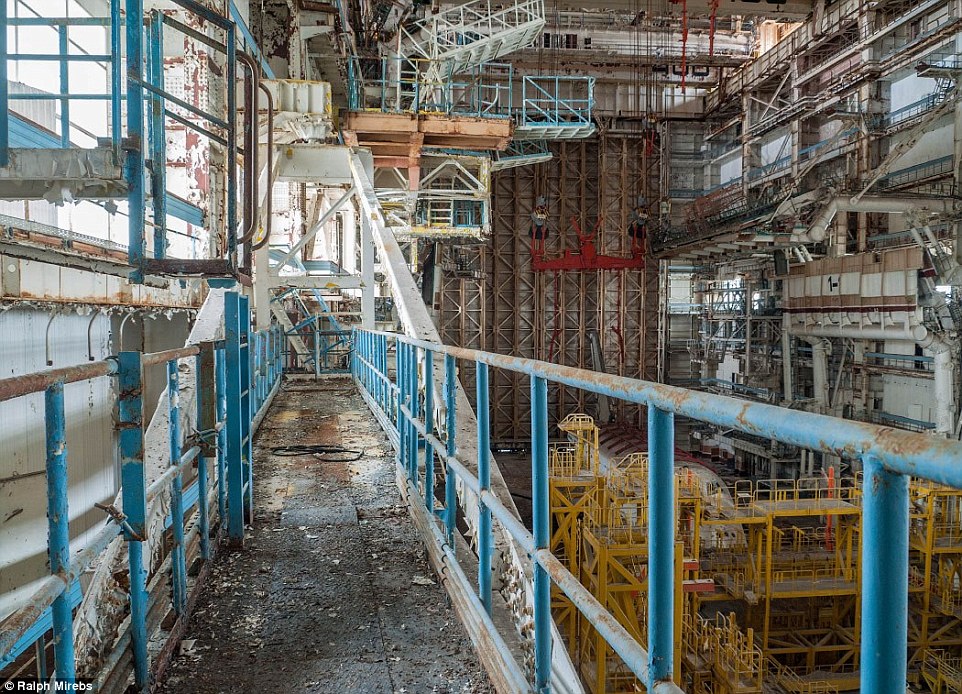
‘Over the years, the Baikonur Cosmodrome territory has tested many different spacecraft, the apex of which was the system Energia-Buran,’ Mr Mirebs explained
Three large transverse beam cranes span the ceiling, each with a lifting capability of 400 tons to move the shuttles or equipment around. A viewing platform afforded Mr Mirebs a magnificent view of the two shuttles, while a variety of passenger gates and ramps are located on the floor to get on board the vehicles. ‘Time and people did not spare the ships and their current state is very pitiable,’ said Mr Mirebs. ‘Part of the thermal protection tiles fell off, cabin windows are broken and there is a generous layer of bird droppings accumulated over more than twenty years.’
Engines at the front of the shuttle would have been used to help it maneuvre in orbit.
Looking inside the shuttles, Mr Mirebs found that the interiors were missing some equipment, but otherwise still have their pilot seats, computer screens and more.
The shuttles also have a cargo area similar to Nasa’s Space Shuttles, where two large doors would have opened to release satellites into space or repair objects in orbit.
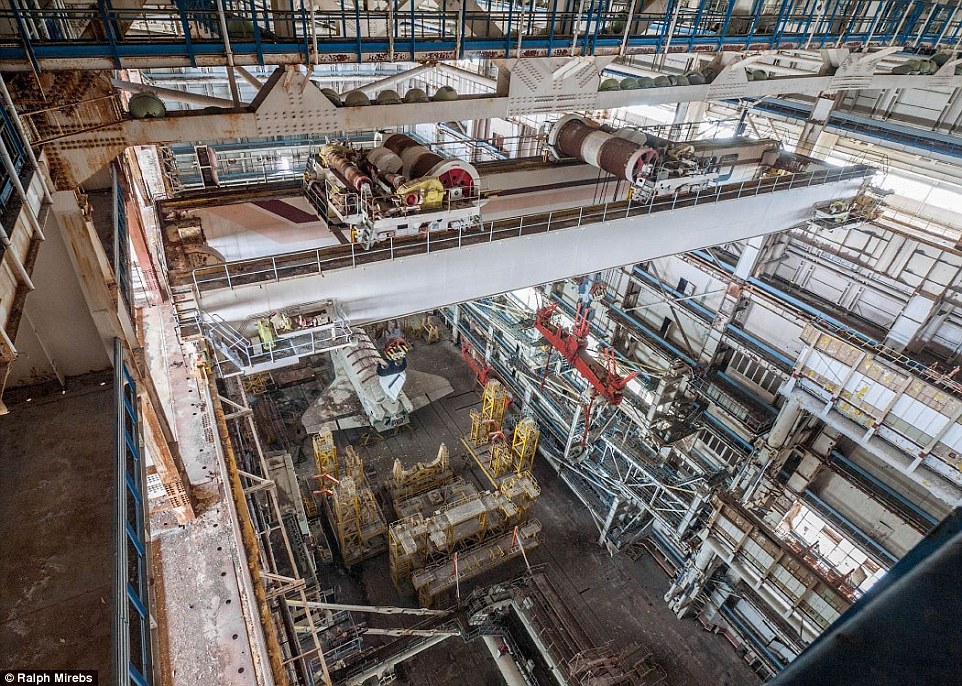
To protect the shuttles from a possible shockwave if a heavy launch vehicle exploded nearby, the structure was made of reinforced steel
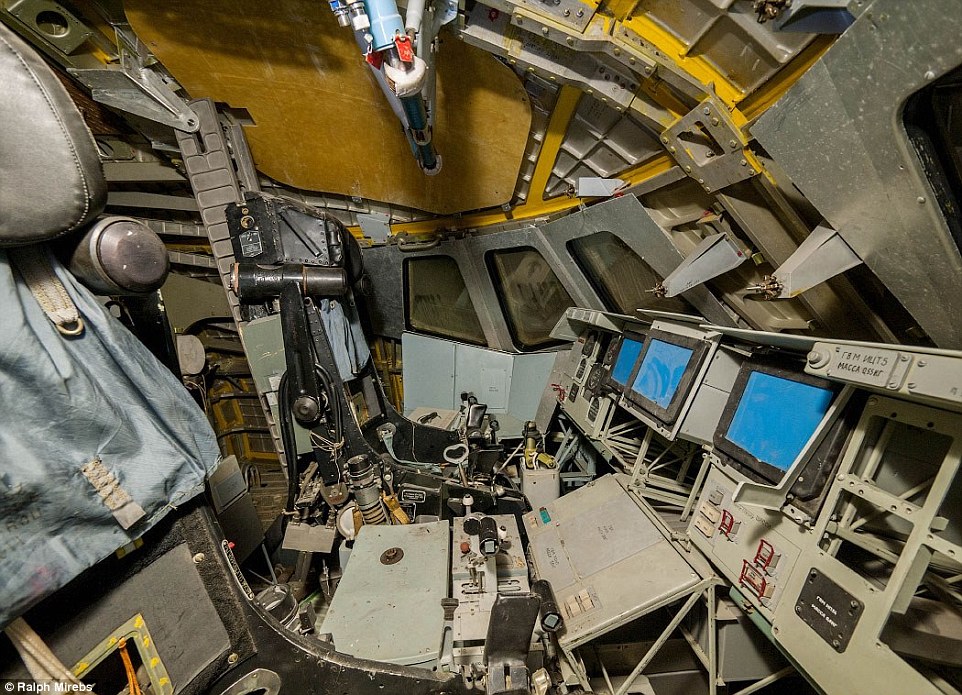
Inside the cockpit the various controls can be seen. This would likely have been a stripped back version of the cockpit that would actually have been used on a space mission, though
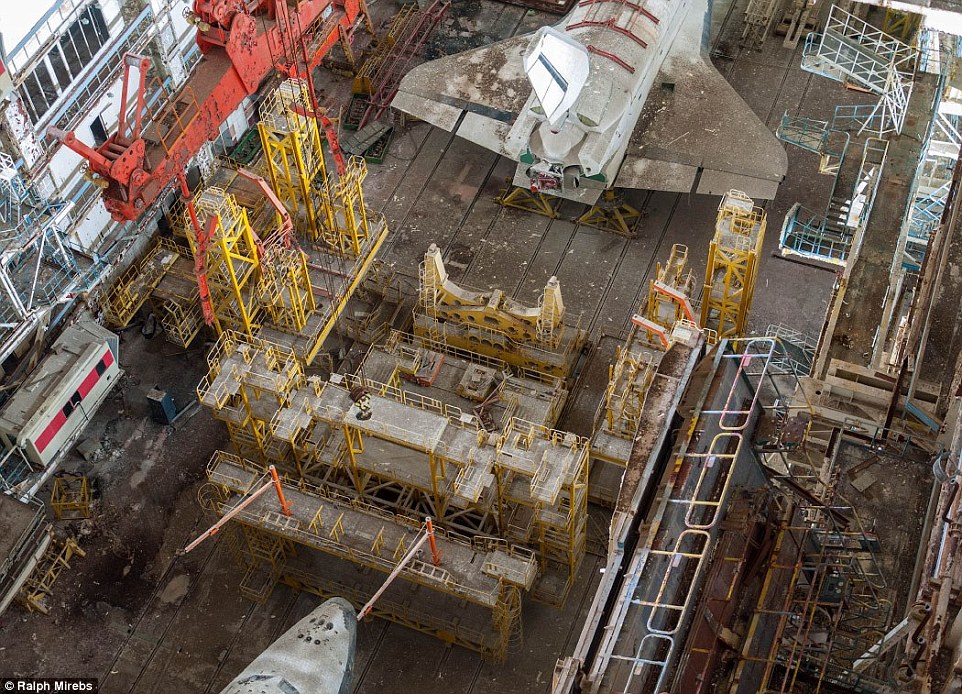
The room was also intended to be a ‘clean room’ devoid of dust when working on the orbiters, so the doors leading out of the central area could be sealed
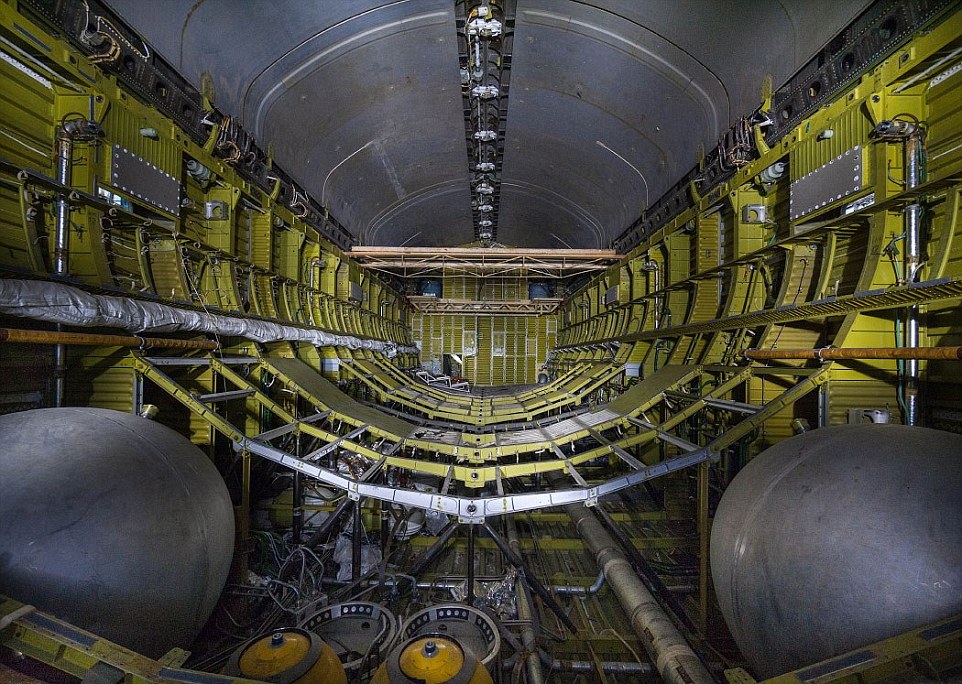
The shuttles had a cargo area similar to Nasa’s Space Shuttles, where two large doors would have opened to release satellites into space or repair objects in orbit
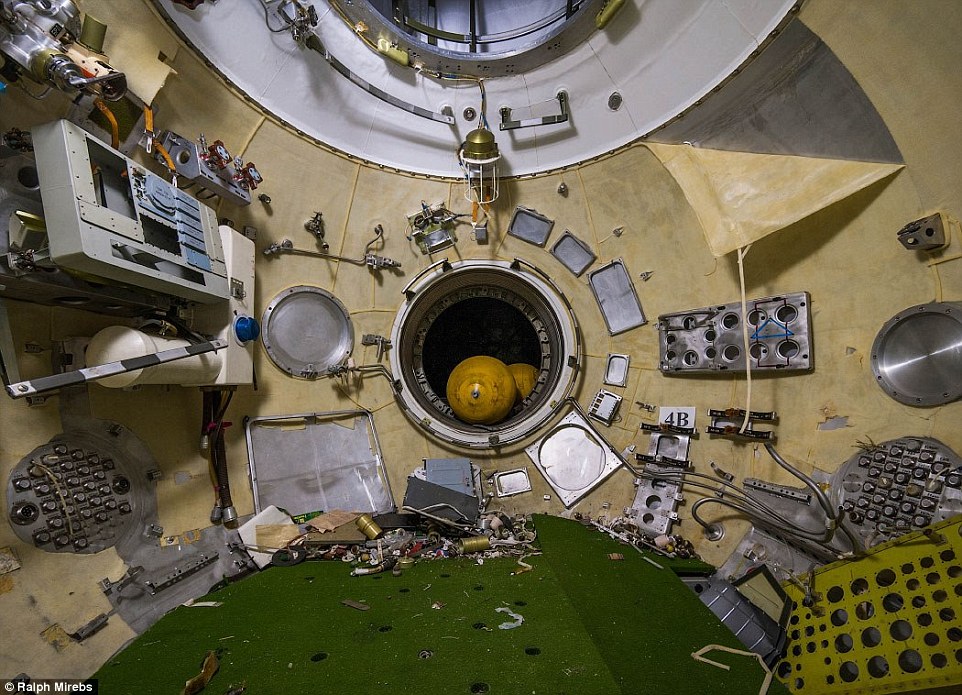
The interiors of the shuttles appear to be full of scrap and rubbish that has been left strewn on the ground
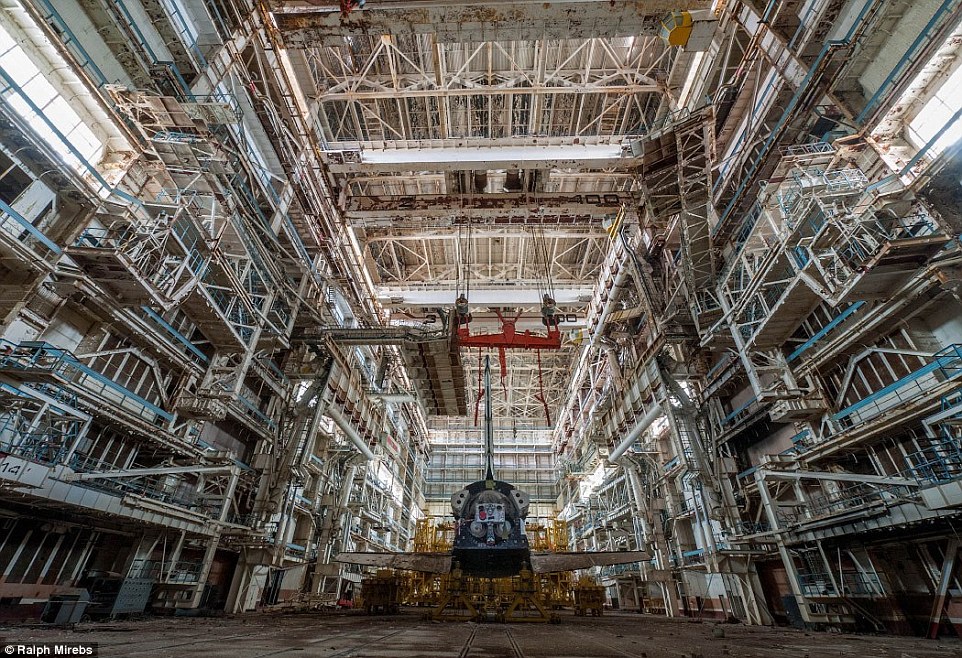
Despite being cancelled, the Buran remains one of only five spaceplanes that have ever been successfully flown into space
However, the shuttles appear to be full of junk and rubbish, while their exteriors do not look much better.
Despite the derelict nature of the hangar, though, the photographer says that he thinks that the programme had a ‘beneficial effect on the scientific and technical progress.’
He added: ‘Yes, most of them did not go beyond the drawings and models, but the ones that leaked through the sieve test and commissions received unlimited support.’

